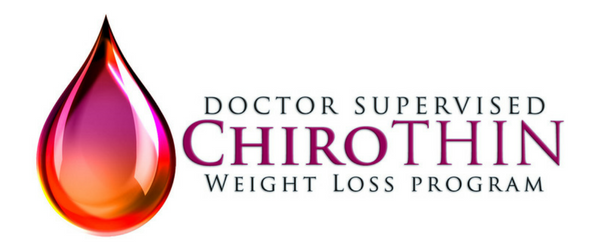
You’ve probably spent a lot of time trying to cut fat out of your diet. But did you know that the true enemy is sugar, not fat?
In the ’60s and ’70s, high rates of heart disease among politicians started to call awareness to the unhealthy American diet. However, science didn’t have a clear answer on the health repercussions of certain foods. Fat was quickly scapegoated as the source of problems, sparking the low-fat trends of the ’80s and ’90s. But America’s health didn’t actually improve.
That’s because the true culprit of obesity is sugar, not fat. Wondering where the confusion comes from, and what’s wrong with sugar? In this guide, we’ll clear up the myths. Keep reading to learn how the sugar industry shifted blame to fat.
How the Sugar Industry Shifted Blame to Fat
When the public started to be alerted to the unhealthiness of the American diet, the sugar industry immediately took steps to protect itself.
When the government released dietary guidelines in the 1980s, the goal was to cut back on the heart disease that had been running rampant in the population. Studies had shown for decades that fat was the culprit. However, no one saw sugar as a possible diet demon, as well.
That’s because in the 1960s, the sugar industry actually paid off scientists to say that saturated fat, rather than sugar, was behind the heart disease epidemic. It wasn’t until recent years that people accessed the documents showing this nefarious activity, but modern science had already targeted sugar as a cause of health concerns when they were released.
According to those documents, the sugar industry had influenced many decades of scientific research into health problems. As it turns out, Havard scientists were paid by the Sugar Research Association to publish a 1967 review of studies about diet and health. However, the Sugar Association specifically selected the studies for the scientists to include, swaying the verdict in their favor.
This article pinned the blame on saturated fat and minimized the role of sugar in health concerns. As the government tried to encourage people to eat healthier, the best efforts failed for the next few decades, because they were working with faulty information.
The Low-Fat Craze
Thanks to the “research” naming fat as a dietary problem, companies started to put out low-fat products. However, many of those products contained huge amounts of salt, sugar, carbs, and other unhealthy things. Many people thought that if food was low-fat, it was healthy. They couldn’t have been more wrong.
Heart disease remained the number-one killer, even as low-fat products were flying off the shelves. It wasn’t until the 2000s that the narrative started to change. The government released new guidelines for a healthy diet, and the words “healthy fat” started to crop up in nutrition articles.
However, the damage to the public had already been done. The sugar industry cover-up caused many Americans to suffer health problems for decades. If the right information had been made available in 1967, instead of the paid article, many health issues and even deaths would likely have been avoided.
What’s the Problem with Sugar?
Why was the sugar industry so worried about health concerns that it had to shift the blame to fat? It turns out they had a lot to hide when it came to the damaging effects of sugar.
1. Sugar is Linked to Heart Disease
Although some kinds of fat can also contribute to heart disease, the link to sugar by now is completely clear. High sugar can cause obesity, inflammation, and more issues that can lead to deadly disease over time.
It’s also all too easy to consume too much sugar. Just a single can of soda exceeds the recommended daily sugar limit, putting people at risk.
2. Sugar Causes Weight Gain
Today, sugar, not fat, is thought to be the major cause of obesity around the world.
When you consume simple sugars like fructose, you actually start to feel more hungry and want to eat more, rather than feeling satiated. Fructose can even affect the hormones that tell your body when to stop eating, so your body can’t properly regulate hunger anymore.
This is worst in sugary drinks, since they don’t address your hunger, but they add to your daily sugar consumption. People are more likely to eat more than they need when they’re also consuming a lot of sugar in their beverages.
3. Sugar Leads to Diabetes
Sugar has also been linked to higher rates of diabetes.
Since obesity is the biggest diabetes risk factors, and sugar has been shown to cause obesity, reducing sugar consumption can also reduce the rates of diabetes. Consuming a lot of sugar leads to insulin resistance, causing the high blood sugar levels that increase the risk of diabetes.
4. Sugar is Linked to Depression
Sugar intake has also been linked to higher rates of depression. Depression makes it hard for people to get motivated to work out and make lifestyle changes, creating a negative loop of mental and physical illness.
Research has shown that people who eat a lot of sugar are more likely to become depressed. However, a healthy diet can counteract this effect by boosting your mood.
How to Cut Back on Sugar and Add Healthy Fat
Now that you know how the sugar industry shifted blame to fat, it’s time to learn how to take back your health with a better diet.
Cutting back on sugar is simple. Reduce your consumption of sugar-added drinks and simple starches, replacing them with low-sugar options. At first, you might find that it’s hard to let go of sugar. But as you cut it out of your diet, the cravings will eventually stop.
Next, start adding healthy fat to your diet. Sources of good fat include avocados, olive oil, cheese, and dark chocolate. A low-sugar diet with plenty of good fat can be delicious, as well as good for you.
Of course, sometimes making dietary changes on your own just isn’t enough. Having trouble losing enough weight? Find out how our program can help you here.
